Ethiopia. A country is falling apart.
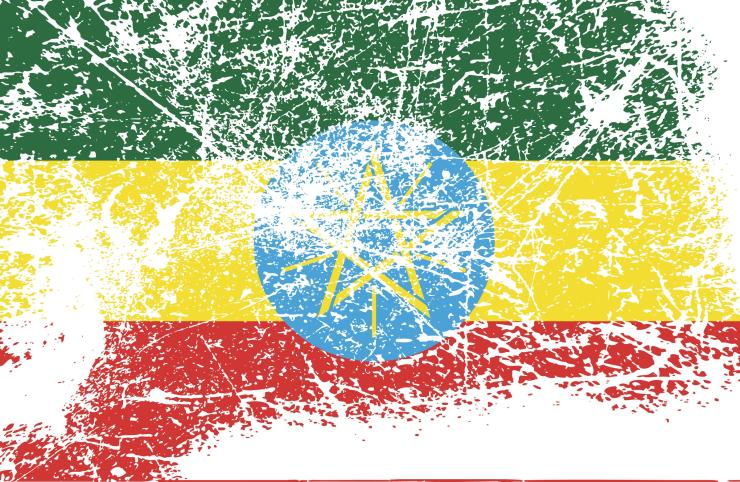
Less than one year after the war in Tigray, Ethiopia has been hit by another conflict in the Amhara region. Prime Minister Abiy Ahmed has seemingly embarked on a military strategy. Many intellectuals warn that this could lead the country to fall apart.
Less than one year after the end of the war in Tigray, Ethiopia is plunging again into violence. Since last April, unrest has escalated in the Amhara region, which is the second most populated of the country, home to more than 30 million people, after the federal government announced plans to dismantle the regional Amhara Special Forces (ASF) and integrate its members into the Ethiopian National Defence Forces (ENDF). The government’s aim is to rebuild the unity of the Ethiopian nation which is threatened by the coexistence of regional armies which group dozens of thousands of soldiers.
But while some ASF soldiers joined the federal army and the police, many others deserted and joined in the mountains the “Fano” Amhara militias which had been reactivated by Abiy during the war in Tigray to fight the secessionists of the Tigray Defence Forces (TDF) and are mainly composed of young rural men.
Fano is an Amharic word which means “freedom fighter” and was used to name the resistant fighters who opposed the Italian occupiers during the Abyssinia war of 1935 and 1936.
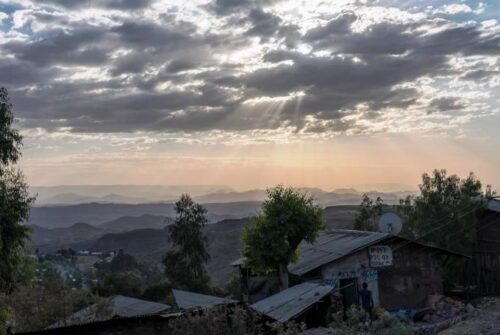
Landscape in the highlands of Lalibela in the Amhara region of northern Ethiopia. File 123rf
Nowadays, this is a war between former allies. From late 2020 until the November 2022 peace agreement in Pretoria, signed under African Union auspices between the Addis government and the Tigray authorities which put an end to the war, the ASF and the Fano militias fought alongside the ENDF against the TDF.
Following the war in Tigray, the Fano emerged well-armed and stronger but without a centralised command. This situation prompted Prime Minister Abyi to get rid of them and of other regional forces that had been created during the Ethiopian People Revolutionary Democratic Front government (1989-2019).
The crisis reached momentum by the end of April when the federal government ordered the ENDF to take action against “extremist” elements after an unidentified armed group killed Girma Yeshitila, the head of the Amhara Prosperity Party, one of the 10 factions of Prime Minister Abiy Ahmed’s ruling Prosperity Party.
The grievances of the Amhara are enormous: they complain that after the end of the war in Tigray, the government did not address issues related to massacres, displacements and harassment of the Amhara and Afar peoples. As a result, Amhara youth joined en masse the Fano militias units which acted as Amhara self-defence groups. They clashed about 30 times with government forces in the Amhara region before 4 August, mostly in North Wello and West Gojam.

Ethiopian Prime Minister, Abiy Ahmed. (File: Office of the Prime Minister)
In early August, the Fano militias swept into towns and cities, briefly taking over some. They threatened the two largest regional towns, Bahir Dar and Gondar before being pushed back by the ENDF. They attacked police stations and garrisons, captured weapons, freed prisoners of the Bahir Dar jail and briefly took control of the airport of Lalibela, Ethiopia’s most popular tourist town. Violent demonstrations were reported. Roads were closed in Debre Markos, Dembecha, Bure, and Amanuel to obstruct ENDF movements. There were attacks on local officials while the regional police and kebele militias aligned with Fano militias. Many of these officials fled to the federal capital, Addis Ababa.
The government responded by sending in the Army, shutting down the internet across the region on the 3 August and declaring on the 4 August a six-month state of emergency, including restrictions on demonstrations and allowing arrests without a court warrant. The federal government also threatened to extend, the state of emergency to the rest of the country. It also announced by mid-August that it had detained individuals in Addis Ababa in informal detention centres, including schools, who were being denied access to court and legal counsel, according to Amnesty International.
By mid-August, human rights organisations reported that over 3,000 Addis Ababa residents, mostly ethnic Amhara were arrested since the state of emergency was declared.

On 27 April, Girma Yeshitila head of the ruling Prosperity Party, Amhara region branch, was shot dead. Yeshitila was the figure of the government’s controversial decision to abolish the regional special forces and reorganize them into the national army, federal and regular police. (File Addis Media Network)
In the Amhara region, the government-imposed night curfews in six towns, including the regional capital Bahir Dar. Public meetings were banned. The ENDF was deployed in the entire region and the government used Turkish-made Bayraktar TB2 drones in the repression. A strike at Finote Salem, on the 14 August, killed at least 26 people during an anti-government demonstration. In a communiqué from the 18 August, Amnesty International said it had also received allegations of mass killings in Bahir Dar and Shewa Robit. On the 25 August, the head of the Amhara region Yilkal Kefele resigned. Since then, clashes between Fano militias and the ENDF continued unabated.
The main reason for the resistance of the ASF to the dismantlement of their troops despite that they were offered a choice to integrate the national army or police or to get compensation to return to civil life is that like the Fano militias, they see themselves as self-defence units. They consider that their role is to protect ethnic Amhara who have been persecuted in several parts of the country, in Tigray, in the Benshangul/Gumuz region near Sudan and around Addis Ababa, from where they have been forcefully displaced while facing harassment by Oromia’s security forces when travelling to Addis Ababa, which is an enclave in the Oromia region.
The Fano and Amhara militias complained for months that the federal government did nothing to protect Amhara settlers.
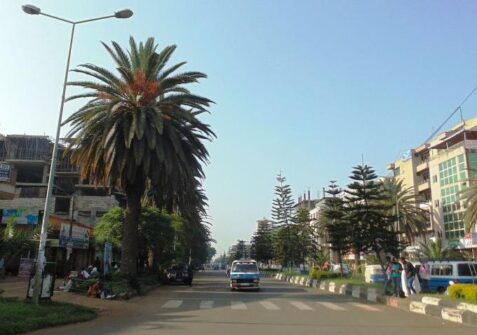
A street in Bahir Dar. the Amhara regional capital. CC BY-SA 4.0/ O.Mustafin
Amharic ethnic militias demand that ENDF troops withdraw from the Amhara region and they accuse the federal government whose leader Abyi is Oromo of being dominated by this ethnic group which is the country’s largest with over 40 million people.
The Amhara militias also demand that the Welkait, Tselemt, Humera, and Raya areas in Tigray region, with large Amhara populations, be officially incorporated into the Amhara region. They claim that when the TPLF still controlled the federal state, these areas were put without consultation under the control of Tigray. Abyi’s decision to eliminate regional special forces is also regarded in Amhara as a threat to the region’s ability to protect itself against aggressions from other regions, in particular attacks from Tigray.
The Fano militias consider that the dismantling of the ASF before the integration of the disputed areas of Tigray into the Amhara region, is premature unless the federal government provides guarantees. Another grievance was that the Amhara militias were left out of the African Union-backed peace talks that ended the war in Tigray, despite their involvement on the Addis government side.
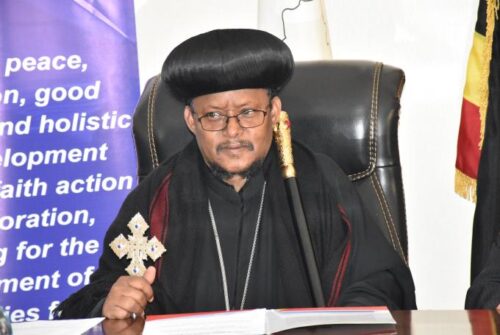
Archbishop Abune Sawiros of South West Shoa Diocese and two other archbishops oversaw the appointment of 17 bishops for dioceses in the Oromia region, and nine bishops for other dioceses at a ceremony in Oromia, without the involvement of the ruling Holy Synod.
The political and social climate is spoiled by anti-Amhara moves in which the members of this ethnic group see the hand of the Prime Minister. The rivalry has even reached the religious sphere. At the beginning of this year, a conflict broke out inside the Ethiopian Orthodox Tewahedo Church along ethnic lines and the government was accused to recognize indirectly the breakaway synod of Oromia and Nations and Nationalities formed in January. Abuna Sawiros, who headed the new synod, justified the decision was necessary to ensure that spiritual fathers familiar with the culture and language of churches in Oromia and other regions are appointed. The decision was seen as an answer to the claim by the Oromo of taking a larger role in Ethiopia’s socio-political space, which had previously been dominated by Amhara and Tigrayans, including inside the Orthodox Church. Government troops and regional Oromia Special Forces supported the rebel bishops. The police clamped down on demonstrators who were opposing the takeover of the St. Michael Church by bishops of the new synod. At least eight people were killed during these incidents in February, according to the Ethiopian Human Rights Commission. After an unprecedented episode of mutual excommunications of bishops by each group, eventually, in mid-February, both sides came to an understanding after discussions in the presence of the prime minister and traditional elders. But the wounds may take time to heal.
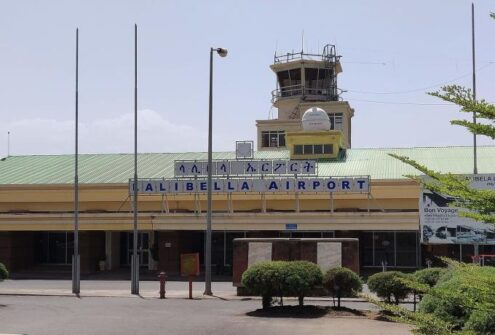
Lalibela Airport . CC BY-SA 4.0/ Sm105
Concerning the Amhara region conflict, the government’s approach is more military than political, which is not very surprising: Abiy Ahmed, known worldwide as the 2019 Peace Prize recipient for having ended the border dispute with Eritrea and seen as a “reformer” is also a former decorated military officer.
The government tone is bellicose. On 9 August, it claimed that the ENDF had annihilated the Fano in Bahir Dar, Gondar, Shewa Robit and Lalibela. Unconfirmed reports claim that 3,000 civilians were massacred in Bahir Dar alone and that other massacres took place in Gondar, Debre Berhan, Shewa Robit and Lalibela.
The Amhara region has been for centuries the heart of the Ethiopian state. Should it explode, Ethiopia would fall apart inevitably. (Open Photo: Flag of Ethiopia. 123rf.com)
François Misser



